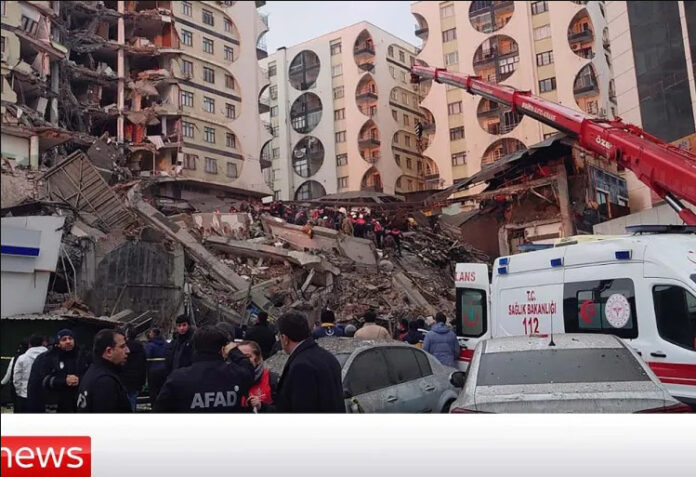Five days after a massive 7.8 magnitude earthquake rocked Turkey and Syria the number of dead is staggering.
Drone footage and satellite imagery have conveyed the stark reality of widespread destruction in an area that straddles two very different nations.
The scale of the disaster is enormous. “We’ve done a bit of mapping of the size of the affected area,” said Caroline Holt, director of disasters, climate, and crises at the International Federation of the Red Cross (IFRC). “It’s the size of France.”
United Nations Secretary-General António Guterres said Thursday that “we haven’t yet seen the full extent of the damage and of the humanitarian crisis unfolding before our eyes,” while estimates from the World Health Organization suggest up to 23 million people could be impacted by the natural disaster.
Once search efforts have ended, attention will turn to longer-term reconstruction. Turkey has suffered earthquakes in the past, and has rebuilt. But how much can be learned from this history and will these lessons be implemented? And will the same efforts be matched across the border?
History repeating itself in Turkey
The death toll broke the grim milestone of 22,000 on Friday. As it continues to climb, so too have feelings of anger and resentment. Turkey is no stranger to earthquakes and many feel that the government failed to prepare for another catastrophic event.
This frustration dogged Turkish President Recep Tayyip Erdogan as he made a whistle-stop tour of the Kahramanmaras region – near the epicenter of the deadly earthquake – on Wednesday and Thursday. Erdogan defended his government’s response, admitting to “shortcomings,” before stressing that it’s “not possible to be prepared for such a disaster.” He also announced that the government’s target was to rebuild “in one year,” though experts told CNN it could take much longer.
Major earthquakes such as these are infrequent, but many in Turkey are still harrowed by memories of the 1999 Izmit earthquake in the Marmara region.
Ajay Chhibber, an economist who was World Bank director for Turkey when that 7.6 magnitude quake struck two decades ago, told CNN that “it’s like a bad movie [that’s] come back again.” Similar to this week’s event, that tremor struck in the early hours but it occurred in the country’s northwest – a densely populated area closer to Istanbul. He said it lasted around 45 seconds, leaving more than 17,000 dead and an estimated 500,000 people homeless.
Flying into the region in the immediate aftermath, Chhibber told CNN he “hadn’t seen that much devastation before.” He recalled traveling in with the Japanese and German ambassadors at the time, who told him “this looks to us like World War II.”











































